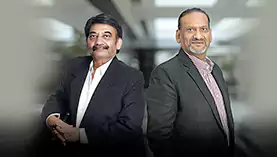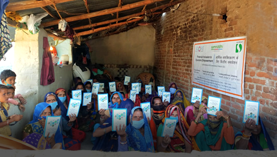Having leveraged the power of influencers to gain visibility and reach, brands are looking at a deeper and wider engagement with the community to convert their fans into loyal consumers. Be it PepsiCo India, or Marico or local confectionary brand Pulse (D S Group), influencers are an integral part of their brand campaigns. In 2020, brands say they will build on the engagement and create a more strategic partnership even as they drive efficiency and accountability into their contracts.
Social media influencers are of immense interest to brands. They open up a demographic that most brands are uncertain about and mostly left out by traditional celebrity endorsers. Harish Bijoor, founder, Harish Bijoor Consults says “Celebrity brand endorsements are so yesterday! The new age of brand messaging push is the trusted social media influencer. Celebrities have hijacked consumers a bit too often onto the path of hype and the trust element has been sullied.”
Influencers help with micro-targeting, allowing brands to reach specific communities. No surprises then that in 2020, according to a recent survey by social data analytics software company Talkwalker in association with local analytics firm Social Samosa, more than 70 per cent of participants said that they would increase their budgets for influencer marketing. (The survey was conducted among 800 marketers from across India.) The big question that brands are grappling with however, is how to ensure their influencer marketing strategy is efficient and more importantly, insulated from fake followers and controversial statements by influencers. India ranks third among the countries with the maximum number of fake followers after the US and Brazil.
For 80 per cent of those with a formal influencer programme, the answer lies in transparency. This means simply using the influence that the influencer wields over his or her community, but stating upfront that the association is a commercial one. While 51 per cent of the respondents felt this reduces the impact of the association between the brand and the influencer, 68 per cent said that it doesn’t actually affect the overall performance of the campaign as long as the content created is good. The marketers also said they were being more selective, measuring influencers by the quality and creativity of content, followed by engagement levels and coherence with brand messaging and finally size of their communities.
Brands are also hedging their risks by employing a large team of influencers—34 per cent hire anywhere between 10-50 people. Shashank Surana, VP, New Product Development, DS Group, says depending on the brand requirement and product life cycle, various above-the-line tactics and digital influencers are deployed. Since its launch, he adds, Pulse candy has used both macro and nano-influencers to build its case online.
In a recent campaign for Pulse candy, Surana says they roped in several influencers. The marketing team looked for people whose posts conveyed a sense of fun and resonated with the young. For Marico's latest campaign #KhuleBaalBefikar (Let yourhair down), it launched a TikTok challenge with top influencers. The campaign crossed 2.8 billion views within three days.
Dilen Gandhi, senior director and category head, Foods, PepsiCo India says, "We think of our influencer strategy as complementary to our brand ambassador strategy. Influencers act as micro-amplifiers that can drive engagement to the idea. It’s the equivalent of your friend relaying a message they’ve heard on mass-media, your friend will add his own flavour while retaining the essence. This makes the message at once more relatable and sticky – however the original idea still remains core.”




































